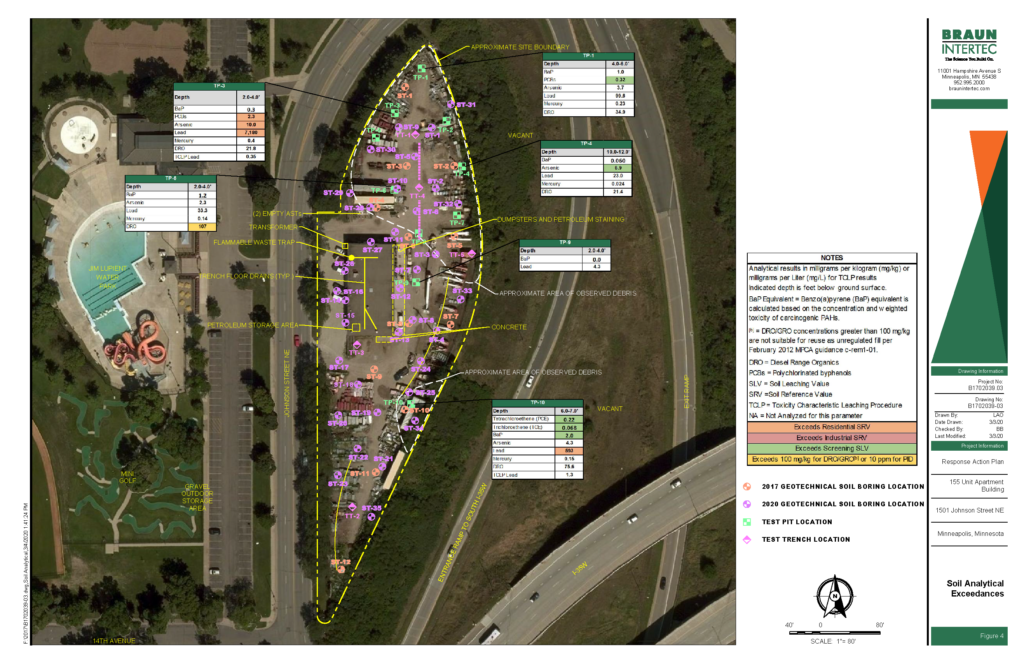Land Information
1501 Johnson Street
For full reports please send a request by clicking the button below and filling out our contact form.
March 2020 Geotechnical Evaluation Report
In March of 2020, a geotechnical evaluation report was conducted at 1501 Johnson Street Northeast by Braun Intertec Corporation. The purpose of the evaluation was to characterize subsurface geologic conditions at selected exploration locations and evaluate their impact on potential development opportunities.
Request the full report by filling out our contact form.
Bedrock and Auger Refusal Depths
Each of the soil borings were drilled until auger refusal, which may have been due to debris, cobbles, boulders or bedrock. The auger refusal information is summarized above in Table 4 and rounded bedrock and auger refusal elevation information to the nearest 1/2 foot.
Soil Analytics
The on-site soil across the site consisted of fill over alluvial and glacial soils. The existing fill soil was not considered to have been placed in an engineered manner and included varying amounts of debris and organic soils that will not be suitable for building subgrade. Below the fill, the native soil and shallow bedrock is generally suitable for building foundation and slab support. Removing existing fill to expose the underlying native soils or excavating to expose bedrock for footing support is recommended. The southern and middle sections of the property are in areas where it appears that excavations to the anticipated footing depth will expose suitable native soil and/or bedrock.
In contrast, the old fill areas are substantially deeper in the north portion of the proposed building. Borings in this area found apparent, or assumed, bedrock to be about 37 feet or deeper below existing grades. Additional rock coring or other methods would be needed to verify the bedrock depths.
Soil Vapor Analysis
Although groundwater is anticipated to be below excavation depths, low permeability soils such as the on-site clay and silt layers may accumulate water after precipitation events. We recommend removing any collected water from the excavations. Project planning should include temporary sumps and pumps for dewatering excavations in low-permeability soils, such as clays.






